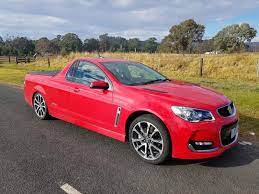Monthly Archives: June 2024
Asset depreciation claims for 2023/24

You don’t know depreciation limits for 2023/24? I don’t blame you for it is not at all clear.
The instant asset write-off brought in during covid was in place until 30th June 2023.
You may have heard that in last month’s Federal Budget, the limit was to be increased from $1,000 to $20,000 for next financial year. But that hasn’t been passed into law yet.
It was announced in last year’s Federal Budget that the limit for 2023/24 was to be $20,000. Only problem is that hasn’t been passed into law yet either! But there is some good news behind that. An amendment has been brought forward to lift the limit for this financial year to $30,000. If only they would pass the bill!
TIP The $20,000 limit (or is that $30,000?) is the ex GST amount.
TRAP being an ex GST amount, beware of buying a car costing say $20,900 (assuming only a $20,000 limit is passed into law) bought privately. Being private there will be no GST so the GST exclusive price is over the limit.
Should I buy an asset I need costing more than $20,000 before July?
Yes – Assets costing more than $20,000 result in a15% depreciation claim even if bought on the last few days of the year. Depreciation claimed in subsequent years will then be 30% of the reduced balance.
So if you by a $30,000 asset on 28th June, your business can claim $4,500 of depreciation in 2023/24 and then $7,650 in 2024/25.
If buy the same asset on 3rd July, your business will have no claim for this 2023/24 year and only $4,500 in 2024/25.
Only buy assets you need!
Depreciation is like any other expense – it’s a deduction which reduces your tax. But if your business is a company then at the 25% small business tax rate, you will save $7,500 in tax over the years. Which means you will have paid the other $22,500.
How should I finance an asset or pay for it?
It depends.
Depreciation (allocating cost over a number of years) reflects that an asset is used to produce income over many years. So it is often appropriate to seek finance to fund the purchase and match your cash flow to the use of the asset.
That said, some assets are hard to finance. Computers lose value as soon as they are bought and lack re-sale value. Consequently, the interest rates are high. And the same is true for unusual assets that are hard to re-sale.
It should also be said that gone are the many welcome years where the interest rates on car finance agreements and the like were historically low. For some with excess cash reserves, paying cash may be the more suitable option.
What form of finance should I use?
Well that depends on your circumstances.
But please be mindful that under a lease you are not the owner until you pay out the residual value. As such you are not the owner until the contract comes to an end. This means your deduction is lease payments (and which will be the same as the first year as the last year). Which means that you are not claiming depreciation and interest (in which case your claim is higher in the first year than the last year).
What if my business buys multiple numbers of the same asset?
That is OK as assets are not grouped. So as long as each asset costs less than $20,000 (or is that $30,000?) then 5, 10 or more of the same assets can be deducted.
What if I am an employee and not a business?
Then you can only deduct in full the cost of assets costing less than $300 (including GST). Anything costing more than that must be depreciated.
Want to know what is best for you? Then call us – we welcome your call as we love helping small business owners.
Can you benefit from catch-up super contributions?

It’s that time of year when people are looking for tax deductions. The relatively new catch-up concessional contribution system may be ideal for some.
Long gone are the days when contributions of more than $100,000 could be made into super.
And now that the deducible contribution limit is just $27,500 it just doesn’t leave much to fund for retirement after taking out 15% contribution tax and life insurance premiums. And this low limit becomes more of problem if one doesn’t use their limit in any year(s).
This low limit particularly hurts those who leave the workforce to bring up children. The same can also be said for those who have a couple of tough years financially. This is particularly true of many Victorian business owners during covid and beyond.
The catch up concessional system allows some to contribute more than the $27,500 limit for which a tax deduction can be claimed for the full amount.
To qualify to make a catch-up concessional contribution before 30th June 2024 one must:-
- Have less than $500,000 in super as at 30th June 2023.
- Not used all of one’s limit in any year from 2018/19 to 2022/23.
- Must qualify to be able to make a contribution.
This year is particularly important as it is the first year an unused year will drop off. That is, if you didn’t have concessional contributions of $25,000 accepted by your super fund(s) in the 2018/19 year, that shortfall will be lost if not used by the end of this month.
Things to be wary or mindful of:-
- Some super funds cease accepting contributions by Monday 24th
- The 30th June falls on a Sunday. Those with their own self managed super fund need to avoid making a contribution (banking transfer) after cut off time on Friday 28th June as it will be treated as a contribution in July. That is next financial year.
- And that problem becomes doubly worse if you are not able to make a contribution in July 2024.
- A contribution may not suit you from a tax perspective this year as your income may be too low.
- Or perhaps it is a good year to trigger a capital gain.
- Those with incomes over $250,000 need to be mindful of the extra 15% tax on contributions (and be mindful of how Section 293 income is defined).
- A catch-up concessional contribution cannot be accessed one satisfies what is called a “condition of release” is satisfied (with the main one becoming retired).
So there are many factors to take into consideration.
Whether you should or shouldn’t make a catch up concessional contribution is best done by receiving personal financial planning advice. Such personal advice will address your current situation and future goals and needs. Please let us know if you would like a referral.
2024 super co-contribution

Under the super co-contribution scheme, the government will contribute $1 for every $2 of personal contributions made by an employed or self employed person.
The maximum government co-contribution is $500. So if you wish to target the full $500, you will need to contribute $1,000.
To be qualify, one must:-
- Be employed with their employer paying the compulsory SGC or be a self employed person running a business.
- Have 10% or more of one’s income coming from employment and/or a sole trader business.
- Be less than 71 at the end of the financial year.
- Have combined assessable income (that being income before deductions), Reportable Fringe Benefits (RFBA) and employer super contributions in excess of basic SGC amount (RESC) of less than $60,400.
- Have paid a non-deductible contribution into superannuation from after tax money by 30thJune 2024. This means the contribution must be made from a personal or joint bank account.
- Not be a temporary visa holder.
- Lodge a Tax Return for the year ending 30thJune 2024.
- The maximum co-contribution for a personal contribution of $1,000 is $500 if your combined assessable income is under $45,400. Thereafter it progressively reduces by 3.333 cents for every dollar in excess of $45,400. There is no entitlement if your combined assessable income exceeds $60,400.
- Not have contributed more than your non-concessional cap.
- Have a total super balance under the Transfer Balance Cap (between $1,800,000 and $1,900,000).
If you want to find out what you might be entitled to, click on the following link to the ATO’s calculator here
Other matters to note are:-
- One’s own contribution and that made by the government will be preserved. That is, one will not be able to access it until one retires or satisfies another condition of release.
- The ATO will deposit the co-contribution into one’s super account once they have reconciled one’s lodged 2024 Tax Return with the information provided by one’s super fund(s). Consequently, most co-contributions will not be credited until at least January 2025.
- If your super is with a public or employer superannuation fund, you will need to ensure they accept such contributions. You also need to obtain the appropriate form.
- You will need to make your contribution well before 28th June (as 30th June falls on a Sunday). For those with your own SMSF, your fund can only accept such a contribution if permitted by its trust deed. We will take no responsibility where a client does not consult with us beforehand.
What is best for you depends on your circumstances and take into account a large number of considerations.
You should therefore seek financial planning advice to ensure such a contribution will work as intended and is in your best overall interests.
